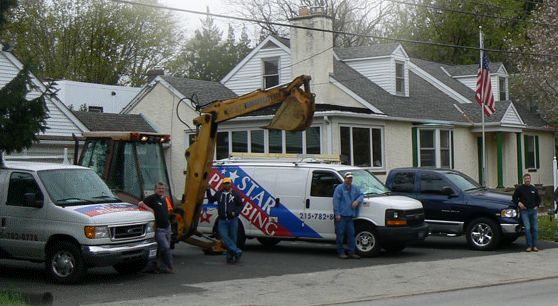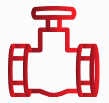How To Clean Your Plumbed Water Dispenser: A Step-by-Step Guide
Cleaning a plumbed water dispenser can be a simple task if done regularly to prevent the buildup of dirt and bacteria. This guide outlines the necessary steps for cleaning a plumbed water dispenser, including the equipment needed and the best practices for ensuring safety.
Cleaning a Plumbed Water Dispenser
Having a plumbed water dispenser in your home or office can be convenient for hydration and other uses. But to ensure that the water is safe and hygienic, it’s important to clean it regularly. This can be done by following a few simple steps with the right supplies.
Supplies Needed
To properly clean a plumbed water dispenser, you’ll need some basic supplies, such as:
• Hot water
• White vinegar
• Lint-free cloths
• Cleaning brush or scrubbing pad
• A bucket or large bowl
• Disposable gloves (optional)
Step-by-Step Instructions
Cleaning a plumbed water dispenser is not complicated. Follow these steps for best results:
1. Put on disposable gloves (if desired).
2. Unplug the dispenser from the power source and empty any remaining water from inside the tank.
3. Mix equal parts hot water and white vinegar in a bucket or bowl.
4. Dip a lint-free cloth into the mixture and use it to wipe down the exterior of the dispenser, including the taps and any buttons or switches on the front panel.
5. Use a cleaning brush or scrubbing pad dipped in the mixture to scrub away any dirt or buildup on any surfaces of the unit, including inside of taps and handles.
6. Rinse off all surfaces with clean, warm water to remove all traces of vinegar from them .
7. Wipe down all surfaces with another lint-free cloth until they are dry .
8 . Replug the dispenser back into power source .
9 . Fill up tank with fresh, clean water to refill reservoir .
10 . Enjoy fresh, hygienic drinking water!
Reasons for Cleaning a Plumbed Water Dispenser
It’s important to regularly clean your plumbed water dispenser for three main reasons: regular maintenance, food safety issues, and perks of cleanliness:
• Regular Maintenance: Cleaning your plumbed in water dispenser regularly helps keep it in good working order by preventing mold growth and buildup of dirt and debris on its interior surfaces that could prevent it from functioning properly over time if left unchecked.
• Food Safety Issues: The growth of bacteria in stagnant water can cause foodborne illnesses if consumed without proper maintenance and cleaning efforts being taken beforehand. By regularly cleaning your plumbed water dispenser, you can help ensure that no harmful bacteria will be present in its supply of drinking water—keeping you safe from potential health risks associated with consuming contaminated liquids .
• Perks of Cleanliness: Not only does regular cleaning help keep your unit functioning at its optimal level , but it also helps keep its exterior looking neat , tidy , and attractive! A gleaming exterior will add an air of sophistication to any room !
Different Types of Plumbed Water Dispensers
There are two main types of plumbed water dispensers available on the market today : bottle/plastic coolers (which are typically bigger units that require using large plastic bottles filled with purified drinking water ) as well as point-of-use ( POU) systems ( which are smaller units connected directly to plumbing lines ). Depending on your needs , either type could work well for you !
Best Practices for Maintaining a Plumbed Water Dispenser
The best way to maintain your plumbed water dispenser is by following some basic guidelines : making sure that no foreign objects enter its reservoir , keeping its external surfaces free from dust accumulation , regularly replacing filters when necessary , disinfecting its interior surfaces every few weeks using an appropriate cleaner , emptying unused reservoirs at least once per month , replacing worn components when necessary , and not allowing children access to buttons or switches without adult supervision . Doing all these things will help ensure that your unit continues working optimally over time !
Cleaning Solutions Used in Plumbed Water Dispensers
When cleaning a plumbed drinking fountain, there are two main types of solutions used : natural solutions (such as white vinegar ) and chemical solutions (such as chlorine bleach ). Natural solutions offer an eco-friendly option while chemical solutions provide more powerful disinfectant action against germs that may have infiltrated your unit’s internal workings . It’s important to read instructions carefully before using either type of solution—as overusing either type can damage sensitive components inside each unit !
How Do You Clean a Plumbed Water Dispenser?
Keeping a plumbed water dispenser clean is an important part of ensuring the safety and quality of the water you are drinking. Without proper cleaning, mold and bacteria can grow in the pipes, leading to potential health risks. Knowing how to properly clean your plumbed water dispenser can help you maintain a safe and healthy environment for your family.
Common Issues with Keeping Plumbed Water Dispensers Clean
Mold and bacteria growth are among the most common issues that come with poor maintenance of a plumbed water dispenser. If left unchecked, these contaminants can create an unsafe environment for those using the machine. Furthermore, they may cause poor taste or odor in your drinking water. To prevent this from happening, it is important to regularly clean your plumbed water dispenser with both physical and chemical methods.
Steps to Take When You Notice Issues with Plumbed Water Dispensers
If you notice any problems with mold or bacteria growth in your plumbed water dispenser, there are several steps you can take to troubleshoot them. The first step is to physically clean the machine by scrubbing down any visible areas that may be contaminated. This should be done at least once per month to help reduce any potential issues before they become a problem. Additionally, it’s important to check that all filters are still functioning properly and that no clogs are present in any of the pipes leading into or out of the machine.
Pros and Cons of Using Chemical Cleaners on Your Plumbed Water Dispenser
Using chemical cleaners on your plumbed water dispenser may seem like an effective way to remove contaminants from the machine, but there are some pros and cons associated with this approach. On one hand, chemical cleaners are great for killing off mold and bacteria quickly; however, they can also be damaging to certain parts of the machine if used too frequently or without proper dilution instructions being followed. For this reason, it’s best to use caution when using these products on your plumbed water dispenser and make sure you read all instructions carefully before applying them in order to avoid any potential damage or health risks associated with overuse.
Know The Right Amount Of Time To Disinfect Your Water Cooler
When disinfecting your plumbed water cooler it is important that you do so at least once every three months in order to ensure its safety and effectiveness in providing clean drinking water for yourself and your family members. During this process it is important that you thoroughly flush out all pipes attached to the cooler as well as replace all filters as needed based on their manufacturer’s instructions. Additionally, it is recommended that you follow up disinfection by running several cycles of clean drinking water through the cooler before use so as not to contaminate it again by accidently reintroducing contaminants during use immediately afterwards.
FAQ & Answers
Q: What supplies do I need to clean a plumbed water dispenser?
A: To clean a plumbed water dispenser, you will need a damp cloth, hot water, and an approved cleaner. You may also need gloves and goggles depending on the type of cleaner you are using.
Q: How often should I clean my plumbed water dispenser?
A: To maintain optimal performance and food safety standards, it is recommended to clean your plumbed water dispenser every three to six months.
Q: What types of cleaners can I use on my plumbed water dispenser?
A: It is recommended to use either natural or chemical cleaners when cleaning your plumbed water dispenser. Natural cleaners include vinegar, baking soda, and lemon juice while chemical cleaners include bleach and other approved sanitizers.
Q: What should I do if I notice mold or bacteria growth on my plumbed water dispenser?
A: If you notice mold or bacteria growth on your plumbed water dispenser, it is important to take the necessary steps to disinfect it immediately. This includes following the instructions provided by the manufacturer and using an appropriate cleaner or sanitizer.
Q: Are there any risks associated with using chemical cleaners on my plumbed water dispenser?
A: Yes, there are some risks associated with using chemical cleaners on your plumbed water dispenser. These include skin irritation due to exposure to the chemicals as well as potential damage caused by incorrect measurements of the cleaner being used. It is important to always read and follow the instructions provided by the manufacturer when using any type of chemical cleaner.
In conclusion, cleaning a plumbed water dispenser is an important task that should be done regularly to ensure clean and safe drinking water for everyone. The process involves firstly identifying the type of water dispenser, and then using the appropriate tools and cleaners to clean the interior of the unit. It is important to remember to flush out any cleaner residue from the unit, before reconnecting it to its plumbing system. With regular maintenance, you can ensure that your plumbed water dispenser remains in perfect condition for years to come.
Author Profile

-
Star Plumbing, located in Elkins Park, PA, is a full-service plumbing company owned and operated by Mitchell Gordon. Since its inception, Star Plumbing has been providing its customers with reliable, quality plumbing services.
The Star Plumbing website offers informative articles on DIY plumbing and plumbing equipment, offering readers helpful advice and tips on how to take care of their own plumbing needs. This is a great resource for those who are looking to tackle a plumbing project themselves, as it provides useful information and advice on how to safely and successfully complete a plumbing job. Additionally, the website provides detailed descriptions of the various plumbing tools and equipment that are available, as well as detailed instructions on how to use them.
Star Plumbing’s website is a great resource for anyone with plumbing needs. Whether a customer is looking for advice on how to take care of their own plumbing or to schedule service from Star Plumbing, the website offers helpful advice and information for all their plumbing needs.
Latest entries
- April 12, 2024Plumbing Equipment And AccesoriesI Tested And Ranked The Best 10 Inch Rough In Round Toilet: And Here’s What I Found
- April 12, 2024Plumbing Equipment And AccesoriesI Tested And Ranked The Best Stone That Cleans Toilets: And Here’s What I Found
- April 12, 2024Plumbing Equipment And AccesoriesI Tested And Ranked The Best Heat Tape For Plumbing: And Here’s What I Found
- April 12, 2024Plumbing Equipment And AccesoriesI Tested And Ranked The Best Kaboom Toilet Bowl Tablets: And Here’s What I Found
